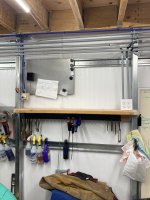wvracer821
Well-known member
I finally got my compressor all fixed up and running good. its time for air line plumbing in the shop now and ive been doing some research on the most economical way to do it. I snagged some pex-al-pex (MaxLine from RapidAir) from work out of the dumpster and i wanted to use that but after pricing out the special fittings im not sure i want to use it since ill have a small fortune in the fittings. ive considered black iron pipe but it seems like lots of people have rust issues over time. i briefly looked into using regular pex but the internet had a lot of negative feedback on that. however, I have not found anyone that actually used it and it failed miserbaly. Has anyone here used regular pex for air on here?

